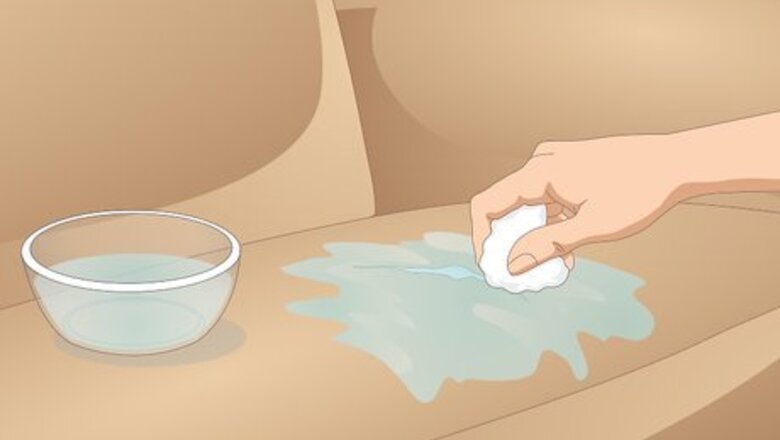
views
- Clean your couch well with diluted vinegar, then cut a patch slightly larger than the tear. Insert the patch into the tear beneath the leather.
- Glue the edges of the tear together with leather or fabric glue. If you’re repairing a hole, fill it with soft filler.
- Paint over the tear with leather paint to disguise your efforts and make your couch look brand new.
Patching

Wipe down the area around the tear with diluted vinegar. Mix equal parts white vinegar and warm water in a bowl. Then, dip a rag into the mixture and wipe down the area around the tear. This will get rid of any dust or grime to ensure that your repair job sticks to the surface. Then, dry the couch with a clean cloth. White vinegar is a mild cleaning solution that’s safe to use on real and faux leather. If you don’t have vinegar, use a leather cleaner or leather couch wipes instead. Care for your leather furniture by wiping it down regularly with a clean, dry cloth.
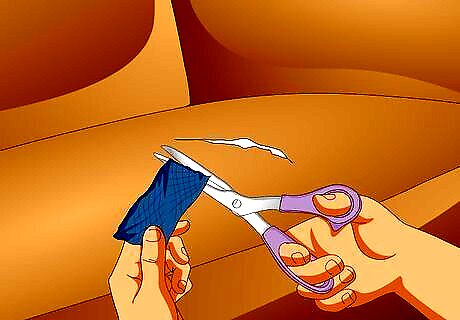
Cut a denim patch slightly larger than the tear. Use a pair of scissors to cut a small denim patch that will fit inside of the tear and act as a new layer of substrate to patch the tear. Make sure the patch is larger than the tear itself so it can act as a new layer beneath the leather. Or, buy a leather repair kit to purchase all of your tools at once. Leather repair kits typically come with a patch, glue, and toothpicks, as well as leather paint to cover over large patches.
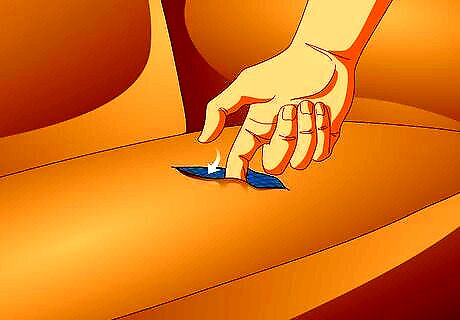
Insert the patch into the tear. Open 1 side of the tear in the couch with your fingers and fit the patch inside of it. Slide all of the patch inside and try to flatten it out with your fingers. If the patch crumples or bunches up, pull it out and try to slide it back in.
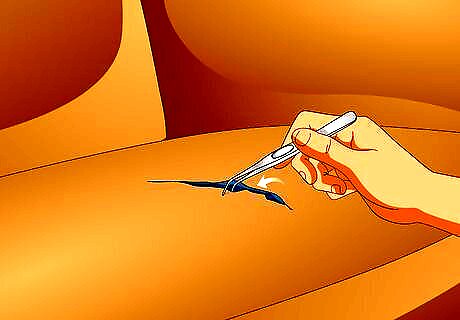
Use tweezers to smooth and flatten the patch. Grab the patch with a pair of tweezers and stretch and flatten it out to create a smooth background behind the patch. Feel the leather above the patch for any bumps or ridges so you know that it is smooth. If you find any bumps or ridges, adjust the patch with the tweezers so it’s flat.
Gluing

Apply a small amount of leather glue or fabric glue to a toothpick. Open the bottle of glue and squeeze out a drop onto the end of a toothpick. Be careful not to let any of the glue spill or fall off onto the couch. Or, use a large needle or a cotton swab. Be sure to use glue made specifically for leather or fabric. Standard craft or super glue can leave residue behind and possibly damage the leather.

Spread the glue on the patch beneath the tear. Lift up 1 side of the tear and insert the toothpick inside. Spread the glue around on the patch beneath the tear so there’s an even layer. If you’re working on a hole rather than a tear, spread a soft filler into the hole to fill the space. Let the filler sit for about 20 to 40 minutes, then move onto the next step. EXPERT TIP Mallika Sharma Mallika Sharma Certified Leather Care Technician Mallika Sharma is a Certified Leather Care Technician and the Founder of The Leather Laundry, a niche spa service for luxury leather gear in India. Mallika specializes in leather cleaning, coloring, repairing, and restoring for shoes, handbags, jackets, wallets, belts, and sofas. She holds a Master’s degree in Finance and Investment from the University of Edinburgh Business School. Mallika is a certified Professional Leather Care Technician and trained with the globally reputed leather care company, LTT in the United Kingdom. Mallika Sharma Mallika Sharma Certified Leather Care Technician Fill leather holes before coloring them. Small holes, tears, cracks, or other damage in leather can be filled in and patched up using a special filler cream or putty. Once the damaged area is filled and smoothed out, use a tiny fiber tip brush or applicator to gently blend leather dye, paint, or pigment over the patched area in a color that closely matches the surrounding material.

Pinch the 2 sides of the tear together. Use your fingers to bring both sides of the tear together to form an even line. Use your fingers to smooth out any bumps or ridges in the tear so it’s consistent. If you don’t line it up properly at first, separate the tear and reconnect the two sides. If the tear is uneven and has ripped edges, carefully piece them back together with your fingers so the edges are connected.
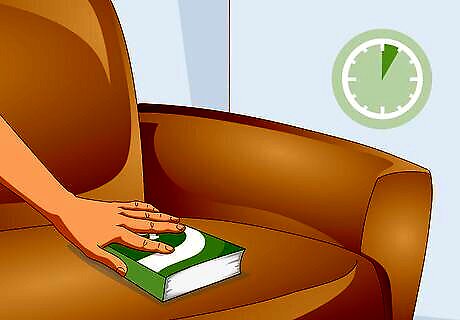
Hold a book against the tear for 5 minutes. Once the glue has been applied, it needs to set. Press a board or a book against the tear, maintaining a gentle pressure. After 5 minutes, the glue will have set, but wait a full hour before you sit on the couch again. If the tear reopens, apply a little more glue to repair it before allowing it to set again.

Paint the leather if you can see the patch. For large patches and repairs, the patch beneath the leather might be visible. If that’s the case, grab some leather paint and make sure it matches the color of your couch. Then, use a paint brush or a sponge to dab it onto the dried glue. Wait about 1 hour before sitting on the couch again. If you purchase a leather repair kit, choose the kit based on the color of paint that you want. EXPERT TIP Mallika Sharma Mallika Sharma Certified Leather Care Technician Mallika Sharma is a Certified Leather Care Technician and the Founder of The Leather Laundry, a niche spa service for luxury leather gear in India. Mallika specializes in leather cleaning, coloring, repairing, and restoring for shoes, handbags, jackets, wallets, belts, and sofas. She holds a Master’s degree in Finance and Investment from the University of Edinburgh Business School. Mallika is a certified Professional Leather Care Technician and trained with the globally reputed leather care company, LTT in the United Kingdom. Mallika Sharma Mallika Sharma Certified Leather Care Technician Utilize invisible mending to sew tears in leather. Instead of using cover-up patches, try mending torn or damaged leather furniture, shoes, bags, and more. Sew ragged edges or tears back together using a sharp needle and strong, high-quality bonded nylon thread that matches the leather item’s original color as closely as possible. Use very small, tight stitching for a subtle and discreet fix that will be invisible to the naked eye.
















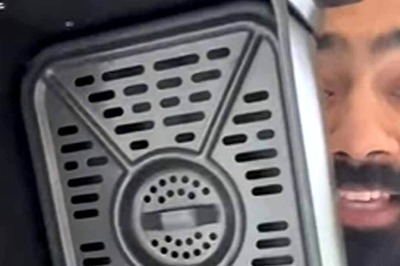

Comments
0 comment